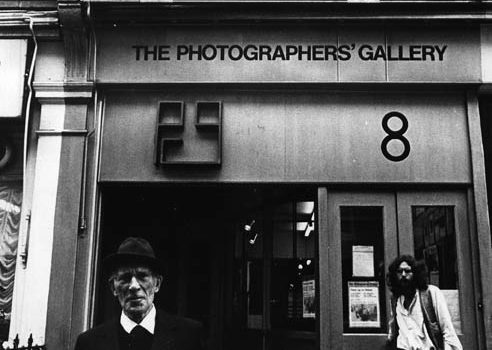On the 19th of May 2012, The Photographer’s Gallery 2012 finally re-opened its doors after closing for 18-months and a £8.9m facelift. The new exhibition programme has been launched with a major exhibition of renowned Canadian photographer Edward Burtynsky and work by New Delhi based Rags Media Collective. Burtynsky’s long-term investigation into oil brings to light, according to the press release, ‘mechanics of the manufacture, distribution and use of one of the world’s most highly contested resources while exploring its impact on our lives, culture and the environment.’ The exhibition Burtinsky: OIL showcases a selection of over thirty large-scale images of this work. An Afternoon Unregistered on the Richte Scale (2011) is the silent, looped video projection displayed by the Rags Media Collective, which is accompanied by a sculptural work entitled 36 Planes of Emotion (2011). Both exhibitions will be on display until 1 July 2012 and are worth a visit.
Sue Davies founded the Photographers’ Gallery in 1971 in London at 8 Great Newport Street, at the edge of Covent Garden, in a converted Lyon’s Tea shop. Before founding the first independent gallery in Britain devoted to photography, Davies worked at the ICA, London’s Institute for Contemporary Art. While organising photography exhibitions and talks, she realised that there was a need in London for a gallery space dedicated to photography. The Photographers’ Gallery then opened its doors in January 1971 with the exhibition The Concerned Photographer, curated by Cornell Capa and previously shown in New York. Tom Hopkins, the ex-editor of Picture Post, was elected the first chair of the gallery’s board of trustees.
The Photographers’ gallery was the first public gallery in the country to promote and exhibit key names from the international photography scene, such as Robert Capa, Andreas Gursky and Juergen Teller, as well as established contemporary British photographers (including exhibitions by Corinne Day and Martin Parr). Furthermore, the gallery also produced the high-profile annual International Photography Prize – The Deutsche Börse Photography Prize – of which Andreas Gursky, Robert Adams and Paul Graham were past winners. This year the four shortlisted artists are Pieter Hugo, Rinko Kawauchi, John Stezaker and Christopher Williams, all of which will be displayed in the new Photographers’ Gallery from July 13th until September 9th 2012.
In 1980, the gallery extended into a new space, at 5 Great Newport Street, which provided the gallery with two exhibition areas, the Tom Hopkinson Room, the Portfolio Gallery, the Print Room Space and a Reference library. The original building, number 8, became known as the Bill Brandt Room and was home to the gallery’s primary exhibition space and a bookshop. In 1993 architect Nick England designed the extensive refurbishment of the Photographers’ Gallery, which resulted in two public galleries, one in each building, a bookshop, a café, offices and a Print Sales Room.
The Director and the Board of Trustees of The Photographers’ Gallery made the decision in early 2008, to convert the warehouse in Ramilies Street, which was purchased in 2005, into a space suitable for use as a temporary public gallery. In November 2008 the gallery closed at Great Newport Street and celebrated its new start with two final displays on Soho: Dryden Godwin: Cast and Soho Archives 1930s to 1950s. They moved across Soho to 16-18 Ramilies Street, where the gallery was finally able to continue all of its activities on one single site. In November the gallery closed down, as mentioned above, to be converted by the Irish architects O’Donnel + Tuorney into, as Brett Rogers has put it, ‘a cultural oasis in the heart of central London’. The new building consists of three floors of public galleries, one floor dedicated to learning (offering a broad programme of talks, events and workshops) a large bookshop, a Print Sales Room and a new café. Over the past 4 decades this gallery has been an instrumental force in establishing photography as a serious art form internationally, continuing to be one of the UK’s primary venues for contemporary photography. With the rise of digital photography, a new digital curator will also be appointed.
Before its temporary closure, according to Brett Rogers, the gallery had about 400,000 visitors a year – a number, which is expected to rise due to its convenient location and the growing popularity of the medium it promotes. Just before the closure of the publicly-funded Photographers’ Gallery, the institution was accused by photographers and critics of losing its way. It seems as if, during the past 18 months, there has been much tactical thinking in order to reassert the gallery’s reputation, and first impressions certainly suggest that we will not be disappointed.
By Anna-Maria Pfab
The Photographers’ Gallery
16 – 18 Ramillies Street
London
W1F 7LW
















